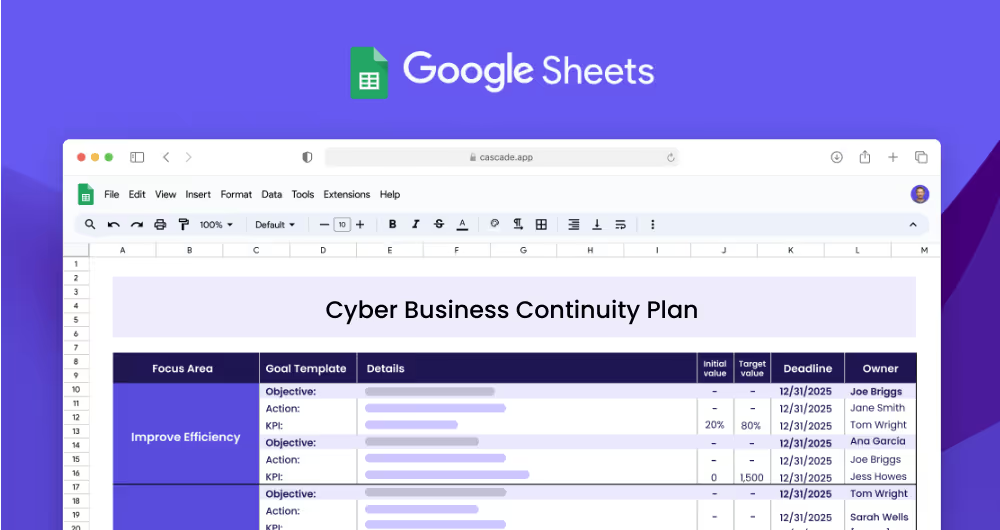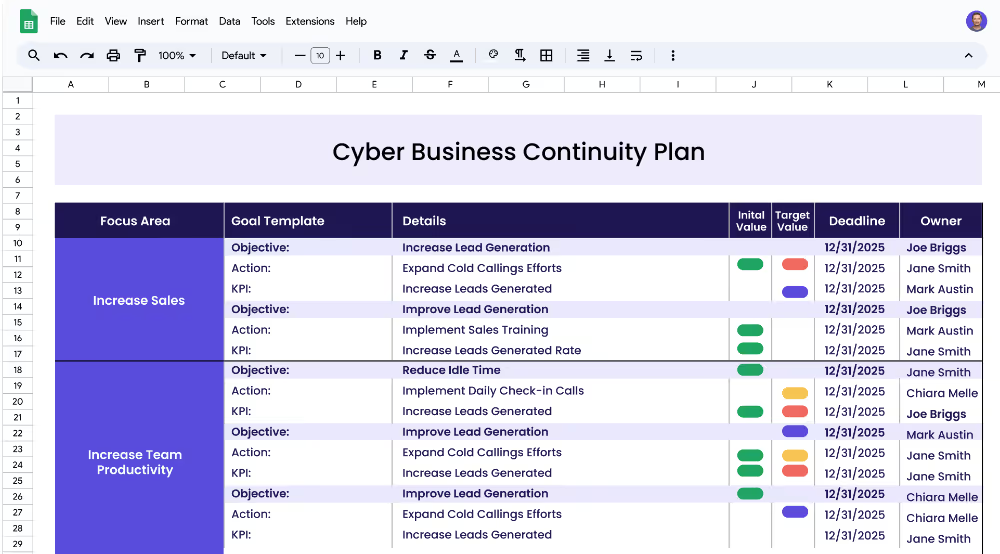A Cyber Business Continuity Plan is a strategic plan that outlines the measures to be taken to protect critical systems, data, and IT infrastructure during cyber incidents or disruptions. It is designed to ensure the continuity of business operations and minimize the impact of a cyber-attack or cyber-related emergency. It should be tailored to the specific needs of the organization and should include detailed plans for responding to and recovering from a wide range of cyber-related incidents.
Each focus area has its own objectives, projects, and KPIs to ensure that the strategy is comprehensive and effective.
This Cyber Business Continuity Plan template is designed for organizations that want to protect their systems, data, and IT infrastructure from cyber-related threats and incidents. It can help organizations create a comprehensive plan that outlines the steps to be taken to mitigate the effects of a cyber-attack or cyber-related emergency. It can also be used to ensure that the organization is prepared to respond quickly and effectively to such incidents.
When creating a Cyber Business Continuity Plan, it is important to define clear focus areas. These should be based on the specific needs of the organization and should include topics such as cyber security, incident response, and business continuity. Each focus area should be broken down into objectives and measurable targets (KPIs) to ensure that the plan is effective in addressing the organization's needs.
Objectives should be specific and measurable, and should clearly define the expected outcomes of the plan. For example, an objective under the focus area of cyber security may be to reduce data security risk. This objective should then be broken down into measurable targets (KPIs), such as reducing the risk to a certain percentage.
KPIs are measurable targets that are used to measure the success of an objective. They should be based on the objectives set out in the plan and should be specific, measurable, and achievable. For example, a KPI for the objective of reducing data security risk may be to reduce the risk to a certain percentage.
Projects (or actions) are the steps taken to achieve the KPIs set out in the plan. These may include creating a data security policy, implementing a cyber security framework, or developing an incident response procedure. Each project should be clearly defined and include measurable targets to ensure success.
If you’re ready to accelerate your strategy and see faster results, Cascade Strategy Execution Software offers a streamlined platform designed to integrate planning and execution seamlessly. This robust software enhances real-time updates and centralized collaboration to help your team track progress, adjust strategies quickly, and maintain alignment across all levels. Say goodbye to the limitations of traditional spreadsheets and manual updates; embrace the power of Cascade to drive your strategy forward. Sign-up for free or book a demo with one of our strategy experts and start seeing real results today!


